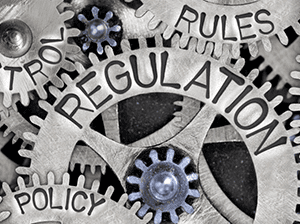Data regulations describe policies and laws ensuring that processed data is shared or governed appropriately, where the right data assets go to the right place at the right time. Data regulation falls under the umbrella of Data Governance.
Advances in technology, such as cloud computing, allow individual’s or company’s data to be stored cheaply and highly accessible. The ability to easily gather, store and process data is no longer icing on the business cake. Consumers and democracies demand immediate access to their information, wherever and whenever requested.
However, with these requirements, privacy concerns have increased due to:
- Dominance of financial and data assets by the United States FAANG (Facebook, Apple, Amazon, Netflix, and Google) and Chinese BAT (Baidu, Alibaba, Tencent)
- Increasing data breaches
- Responses to ensure data protections (e.g., GDPR and CCPA)
- Increasing number of connected devices
- Reliance of third parties for digital initiatives
- Ethical considerations of data citizenship
Data regulations enable people and businesses to solve these privacy concerns by establishing trust about handling data assets.
Other Definitions of Data Regulations Include:
- “Precise, clear rules that define ownership of data and express the attendant rights to license, transfer, use, modify, and destroy digital information assets.” (Deke Law and Technology)
- “Policies and laws, around data, enacted by government bodies imposing stiff financial penalties for non-compliance.” (Daniel Wu)
- “Moral pressure on organizations to be good with information and data.” (Amber Lee Dennis)
- “Risks to business compliance, finances and reputation.” (Gartner)
- “Policies to protect individual’s data.” (McKinsey)
- “Privacy and Data protections.” (Forbes)
Businesses Need Data Regulations To:
- Provide structure to data sharing
- Accelerate business growth
- To save money by reducing the need for government interventions
- React faster to the rapid pace of innovations
- Comply with existing regulations
- Retain customers
Image used under license from Shutterstock.com
